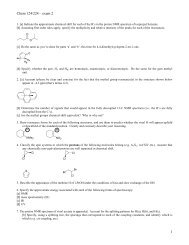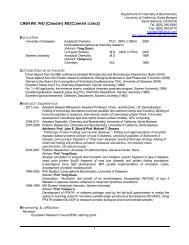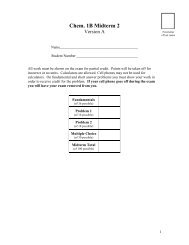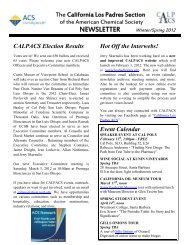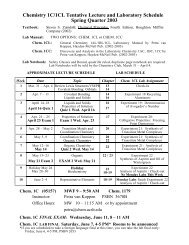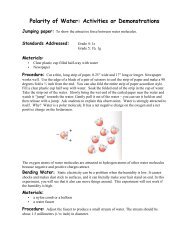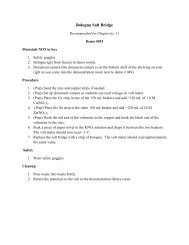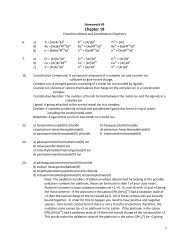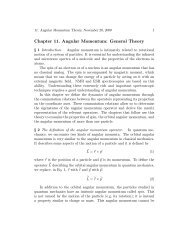29 Si NMR Some Practical Aspects - Pascal-Man
29 Si NMR Some Practical Aspects - Pascal-Man
29 Si NMR Some Practical Aspects - Pascal-Man
You also want an ePaper? Increase the reach of your titles
YUMPU automatically turns print PDFs into web optimized ePapers that Google loves.
Gelest, Inc.<br />
strongly depends on the substituents on the transition metal and the metal itself. Chemical shifts are observed<br />
in a range of ~ -10 ppm (for example: –9.4 ppm for [( t BuO) 2 <strong>Si</strong>=Fe(CO) 4 ]*THF [23]) and nearly 145 ppm<br />
(for example: 141.9 ppm for [(Me 2 N-C 10 H 6 )(H)<strong>Si</strong>=Mn(CO) 2 (MeCp)] [24]).<br />
The data of a number of other transition metal complexes are collected in some reviews [12, 14, 15, 16]. Due<br />
to the large variety for the bonding situations of the silicon a great spread of chemical shifts ranging from 289<br />
ppm [17] up to -150 ppm [18] is observed.<br />
For other compounds, especially for higher coordinated silicon derivatives, general collections of silicon<br />
chemical shifts might be consulted [3, 12, 19].<br />
4. Coupling constants<br />
All magnetic nuclei in a molecule interact and the splitting caused by this gives rise to typical coupling patterns.<br />
Two cases can be distinguished:<br />
1. Coupling with 100% isotopes such as 1 H, 19 F or 31 P gives the well-known splitting patterns in the <strong>29</strong> <strong>Si</strong><br />
spectra. Couplings with quadrupolar nuclei such as the isotopes of chlorine are usually not observed.<br />
2. Coupling with other rare spins such as <strong>29</strong> <strong>Si</strong>, 119/117 Sn or 13 C leads to smaller satellite lines left and right to<br />
the main line according to their abundance in the usual <strong>29</strong> <strong>Si</strong> spectra.<br />
The ranges of some silicon-element coupling constants are found in Table 4. The sign of coupling constants<br />
over one bond is mostly negative because of the negative magnetogyric ratio of the <strong>29</strong> <strong>Si</strong>. Exceptions are found<br />
if the silicon is connected to an element with tightly bonded s-electrons e.g. 19 F or 31 P.<br />
Table 4<br />
Ranges of selected silicon element coupling constants (without sign)<br />
<strong>Si</strong>-X coupling (X) 1J(<strong>Si</strong>-X) in Hz 2J(<strong>Si</strong>-X) in Hz 3J(<strong>Si</strong>-X) in Hz<br />
(largest – smallest) (largest – smallest) (largest – smallest)<br />
1H 420 - 75 10 – 3 (<strong>Si</strong>CH 3 ) 8 – 1<br />
13 – 1 (<strong>Si</strong>XH)<br />
19F 488 - 108 91 – 17 16 – 2<br />
31P 256 - 16 44 -




